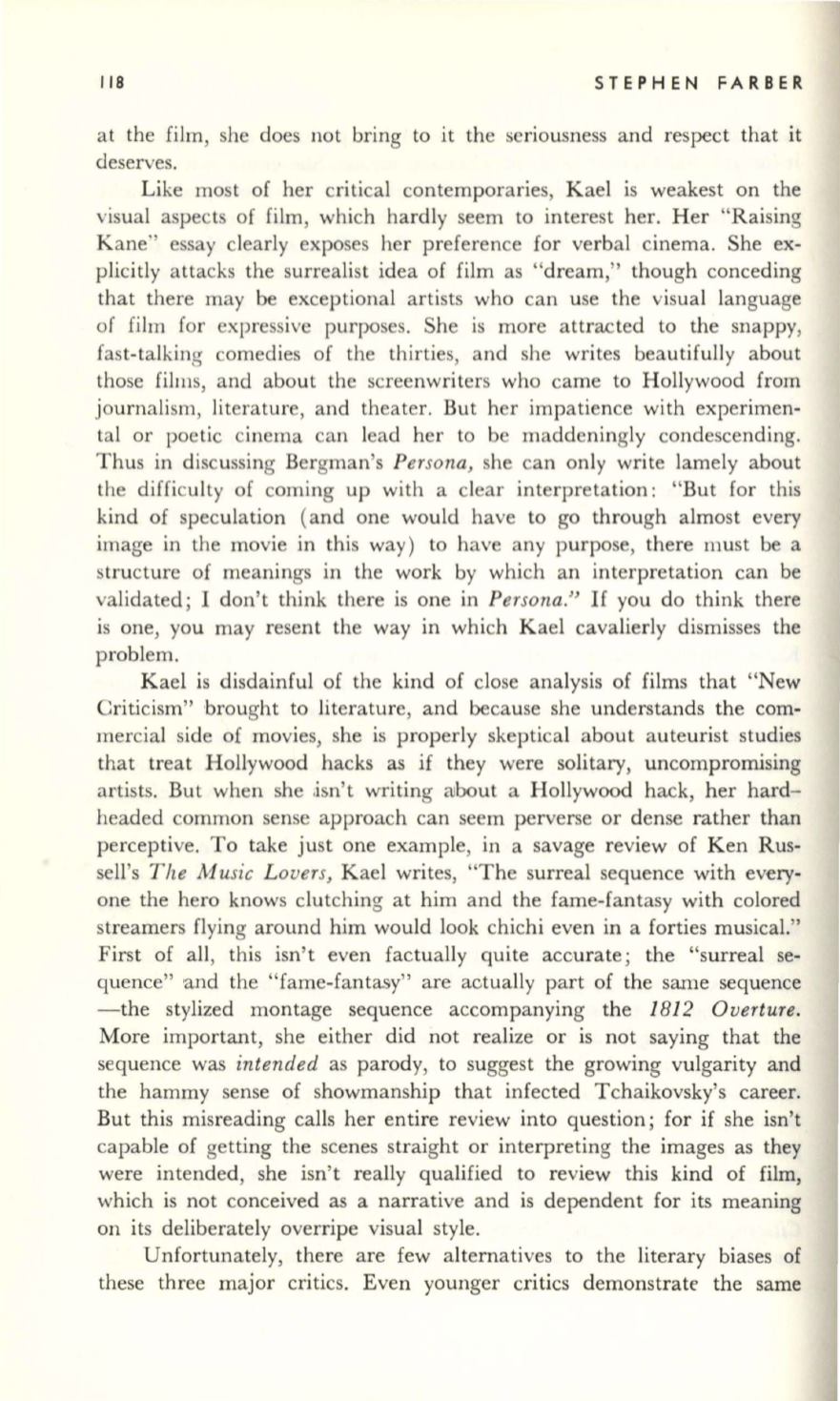
118
STEPHEN FARBER
at the film, she does not bring to it the seriousness and respect that it
deserves.
Like most of her critical contemporaries, Kael is weakest on the
visual aspects of film, which hardly seem to interest her. Her "Raising
Kane" essay clearly exposes her preference for verbal cinema. She ex–
plicitly attacks the surrealist idea of film as " dream," though conceding
that there may
be
exceptional artists who can use the visual language
of film for expressive purposes. She is more attracted to the snappy,
fast-talking comedies of the thirties, and she writes beautifully about
those films, and about the screenwriters who came to Hollywood from
journalism, literature, and theater. But her impatience with experimen–
tal or poetic cinema can lead her to be maddeningly condescending.
Thus in discussing Bergman's
Persona,
she can only write lamely about
the difficulty of coming up with a clear interpretation: "But for this
kind of speculation (and one would have to go through almost every
image in the movie in this way ) to have any purpose, there must be a
structure of meanings in the work by which an interpretation can be
validated ; I don't think there is one in
Persona."
If
you do think there
is one, you may resent the way in which Kael cavalierly dismisses the
problem.
Kael is disdainful of the kind of close analysis of films that "New
Criticism" brought to literature, and because she understands the com–
mercial side of movies, she is properly skeptical about auteurist studies
that treat Hollywood hacks as if they were solitary, uncompromising
artists. Bu t when she jsn' t writing aJbout a Hollywood hack, her hard–
headed common sense approach can seem perverse or dense rather than
perceptive. To take just one example, in a savage review of Ken Rus–
sell's
The Music Lovers,
Kael writes, "The surreal sequence with every–
one the hero knows clutching at him and the fame-fantasy with colored
streamers flying around him would look chichi even in a forties musical."
First of all, this isn' t even factually quite accurate ; the "surreal se–
quence" and the
" fame-fanta~y"
are aotually part of the san1e sequence
- the stylized montage sequence accompanying the
1812
Overture.
More important, she either did not realize or is not saying that the
sequence was
intended
as parody, to suggest the growing vulgarity and
the hammy sense of showmanship that infected Tchaikovsky's career.
But this misreading calls her entire review into question; for if she isn't
capable of getting the scenes straight or interpreting the images as they
were intended, she isn't really qualified to review this kind of film,
which is not conceived as a narrative and is dependent for its meaning
on its deliberately overripe visual style.
Unfortunately, there are few alternatives to the literary biases of
these three major critics. Even younger critics demonstrate the same


